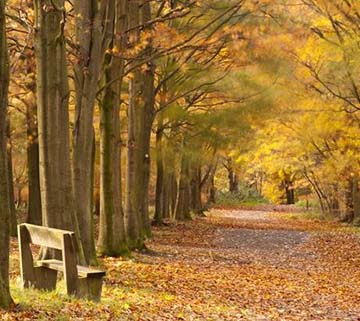Is a woodland funeral the best way to go?
UK – I’ve been to a number of woodland funerals and am considering one myself. But are they really the best option? Going green allows an empowered response to death. The Natural Death Handbook is full of ideas of how to think outside the box
(naturaldeath.org.uk, £24) taking the exploitation out of a “classic distress purchase” by avoiding egregious profiteering by the funeral industry, the subject of investigations recently by the Office of Fair Trading.
It also gives me the rare chance to say that green is cheaper! The cost of dying is rising faster than the cost of living: the average funeral now runs at £3,551. A green burial site is far cheaper than a plot in an oversubscribed cemetery (and in less than 20 years 44% of conventional plots will be full).
A cremation uses 35 kilowatt hours of electricity, and the carbon emissions from that (400kg of CO2 per body) are released along with mercury from tooth fillings. In 2003 UK crematoria produced 1.34 tonnes of mercury, some of it reaching a marine environment where it may enter the food chain. New crematoria are now obliged to install air-cleaning devices, but mercury is still emitted.
Cemeteries are a type of landfill for the dead. Each burial uses up to three gallons of toxic embalming fluid (predominantly formaldehyde) and shields the body from the earth with wood or MDF, metal and concrete. With a green burial, the body is placed in a biodegradable coffin or shroud and buried in woodland or meadow, hastening natural decomposition. A tree sapling is often planted on top and left to grow. The land is managed under strict ecological principles, allowing the cycle of life to be completed and increasing woodland or meadow coverage. There are nearly 270 sites registered with the National Death Centre, also members of the Association of National Burial Grounds (anbg.co.uk).
Other systems include so-called bio cremation (legal in parts of Canada and the US), or resomation, using alkaline hydrolysis to reduce the body in liquid (using 90% less energy than cremation). Promessa essentially freeze-dries and vibrates the body into an organic powder. And there’s a growing natural cremation movement in the UK advocating outdoor funeral pyres. All await the go-ahead here.
Even when you’re dead, the future must be considered. Green funeral sites pay into a fund for the future and/or plan to keep the land productive as a woodland or meadow. These sites could be linked to sustainable forestry and techniques, notably coppicing. Who wouldn’t want to be part of that legacy?
Photo: Resting place: green funerals allow the cycle of life to be completed. 2020VISION/ Ross Hoddinott /Nature Picture Library/Corbis
Originally published by The Guardian, author Lucy Siegle
© 2014 Guardian News and Media Limited or its affiliated companies. All rights reserved.


Leave a Comment
You must be logged in to post a comment.